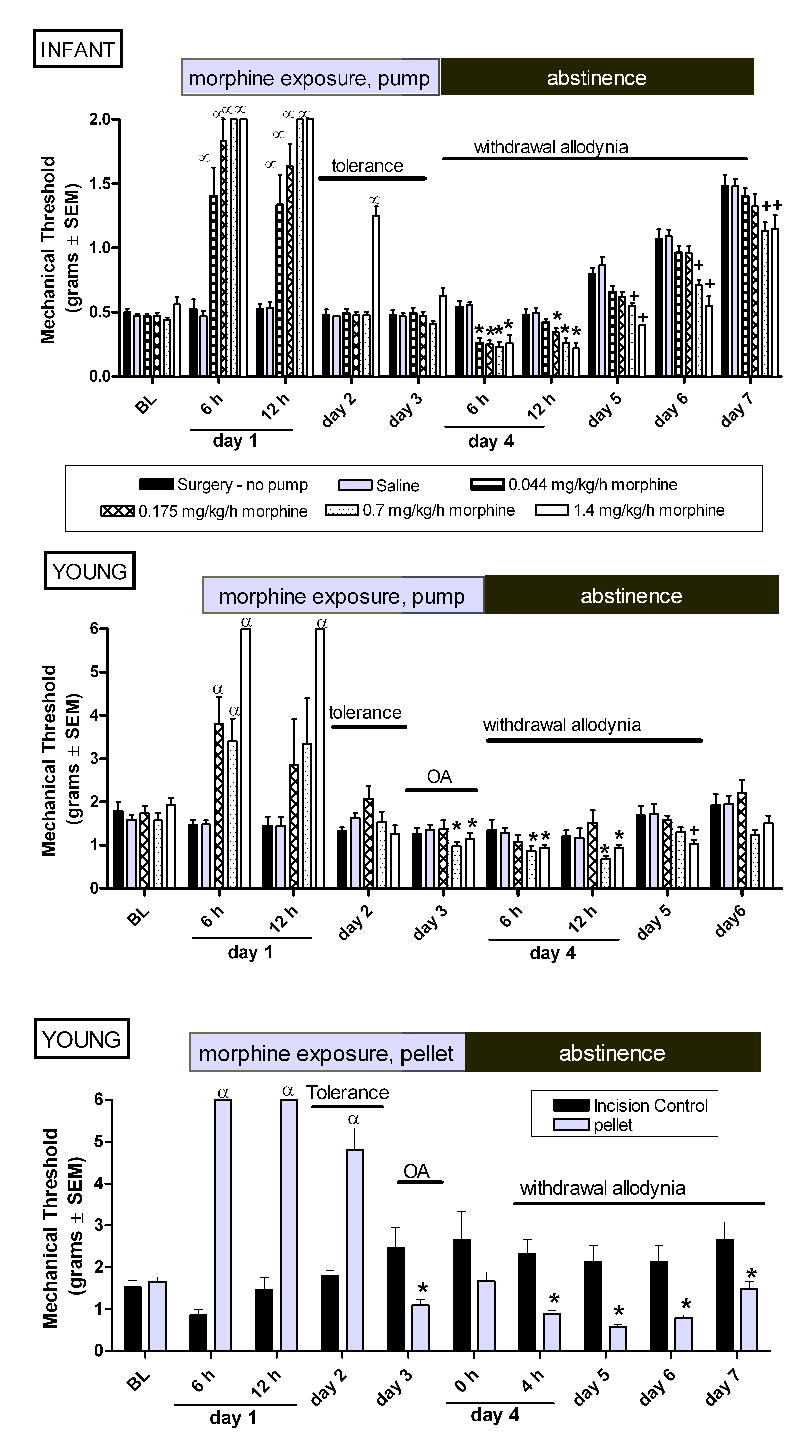Figure 4.

Continuous morphine via a mini osmotic pump age-dependently alters mechanical nociception in infant and young rats. Pumps or morphine pellets were implanted on experimental day 1 and administered continuous morphine for 72 hours. In young rats similar changes in mechanical threshold are observed using either a mini osmotic pump (B) or a morphine pellet (C). Using the same dose of morphine (1.4 mg/kg/hr) tolerance develops more quickly in young (day 2) compared to infant (day 3) rats. By day 3, mechanical thresholds are below control animal responses in young rats indicating the development of opioid-associated mechanical allodynia (OA). Withdrawal associated decreases in mechanical thresholds are seen in both ages. Data is average ± SEM (n=5−6/group). α p<0.05 compared to time matched saline exposed animals, or time matched incision (no pump) controls. *p<0.05 compared to time matched saline exposed animals, or time matched incision (no pump) controls. +p<0.05 from time matched saline injected and time matched saline injected animals.
